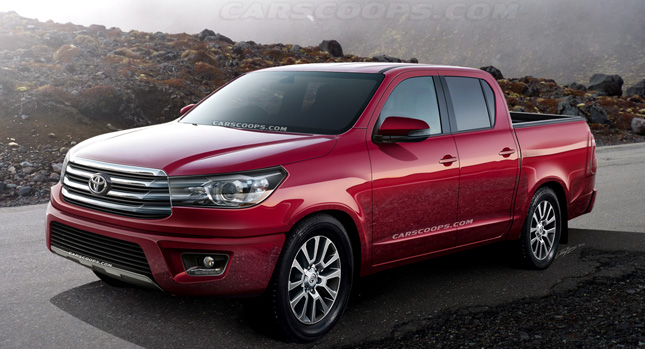In the world of Pickup Trucks, the segment is generally associated with hard-working drivers, utilising their trucks for all manner of uses. Of course, the three rigs that usually come to mind (at least in America) are the F-150, Ram and Silverado.
Yet elsewhere around the globe, this category is not as popular. Why? Because unlike in the good U.S of A, commercial vehicles have been limited in appeal due to size and fuel economy constraints. For example; vast areas of Europe and Asia Pacific have numerous stretches of country roads and narrow city streets – great for a nimble Ford Fiesta, but your F-150 Raptor would scare the village folk off into the woods.
So how does the rest of the world manage? Surprisingly well actually; see they do have pickup’s, but they’re generally limited to compact trucks – equivalent to Chevrolet’s Colorado and Toyota’s Tacoma.
However, the one truck everyone guns for is Toyota’s Hilux. It may now not be a familiar name in the States, but elsewhere it’s big business for Toyota. So much so, that it’s still the No1 selling ute in Australia, whilst nearing the end of its current model run (although Ford’s global Ranger is closing in fast).
Toyota is the one to let this market domination slip away; rather than resting on their laurels, they’ve been hard at work in developing their successor to the outgoing Hilux. With this in mind I’ve taken an spy-shot assisted, illustrated first look at its upcoming replacement.
Design:
Like other commercial vehicles such as vans, buses and heavy haulage trucks – there is only so much freedom designers can have before yielding to packaging and functionality constraints. This Hilux takes on an evolutionary design ethos as opposed to a radical aesthetic.
Starting at the front; the face incorporates Toyota’s latest corporate design language, with a Highlander-meets-Corolla grille divided into horizontal chrome bars. Below sits a larger, trapezoidal lower-intake for an contemporary first impression.
The rest of the body is nothing too radical in format; however, what is different compared to the outgoing Hilux, is its proportions. A broader, more nose-forward hood and a wider tray deviate from it’s past compact dimensions. Overall you could say the new look is a soft mixture of Highlander and Volkswagen Amarok.
What Could Power It:
Don’t go looking for any big and powerful engine options here. Typically the European/Asia Pacific utility truck market has made do with 4-cyl diesel engines – plus an odd V6 here and there. This next generation truck will most likely use a tried-and-true format of 2.5 and 3.0-Liter Diesel fours, plus an optional range-topping 4.0-Litre petrol V6.
Getting most out of these engines will be either a 5-speed manual or a new 6-speed automatic, transferring power & torque to the wheels in both 2wd and 4wd configurations.
Market Positioning:
Toyota’s global compact truck sits among an increasingly populated segment, in which Chinese domestic automakers are also making vast inroads – Greatwall, Kawei Auto, FAW, and Foton are just some of the emerging players. However, most of those new brands are still pumping out pure plagiarized rubbish, so Toyota shouldn’t worry too much…yet.
What they should be concerned about is the updated competition from Ford’s Ranger, Chevrolet/Holden Colorado, Nissan Navara, Mazda BT50, Volkswagen Amarok and Mitsubishi Triton.
The Japanese carmaker will be looking to surpass these rivals with better packing, handling, comfort and technology gadgets in Single Cab, Extended Cab and Crew Cab configurations.
Expect Toyota’s 8th generation Hilux to be revealed later this year or early 2015 as an MY2016 offering. Until then, what do you think of Toyota’s design direction for this truck and should it replace the Tacoma?
Tell us your valued feedback in the discussion area below.
By Josh Byrnes
Photo Renderings Copyright: Carscoops.com / Josh Byrnes
PHOTO GALLERY








